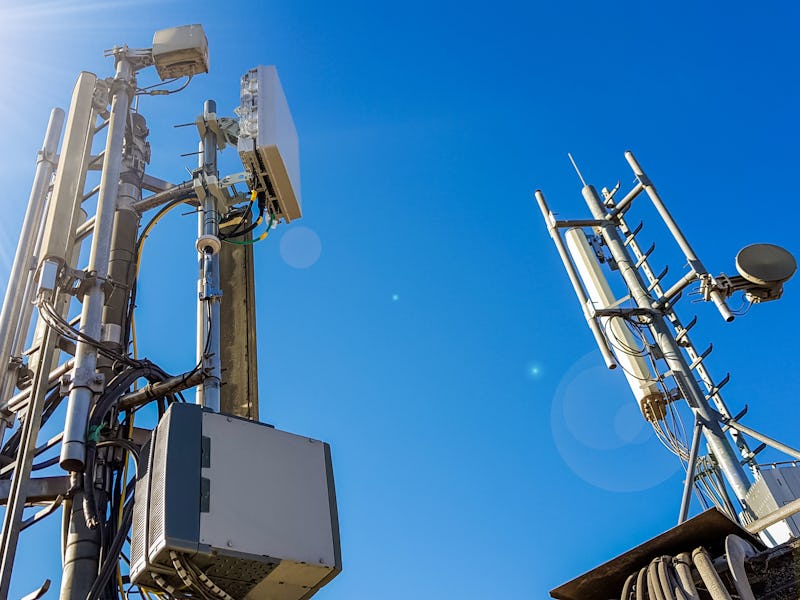This smart surface could boost your phone's signal by 1,000 percent
And conserve your battery while it's at it.

We have reached an impasse with our handheld devices where we simultaneously want smaller devices while also wanting greater connection speed and power. Ironically, one usually comes by sacrificing the other. But researchers have now designed an unlikely new way to boost our phones' signal without sacrificing their designs: a cheap wallpaper-like smart surface filled with thousands of antennas.
This smart surface is a platform called RFocus and was designed by a group at MIT's Computer Science and Artificial Intelligence Laboratory (CSAIL) to operate much like a huge, 5G antenna. Filled with 3,000 cheap antennae, the software-operated surface determines how to maximize a signal for a receiver by reflecting or transmitting signals in its environment. During experiments, the surface was able to increase signal strength by a factor of 10.5.
A paper describing the breakthrough, detailed Monday, is set to be presented at the USENIX Symposium on Networked Systems Design and Implementation (NSDI) in Santa Clara, California. The event is set to take place from February 25 to 27.
“The core goal here was to explore whether we can use elements in the environment and arrange them to direct the signal in a way that we can actually control,” MIT Professor Hari Balakrishnan, a senior author on the RFocus paper, said in a statement. "If you want to have wireless devices that transmit at the lowest possible power, but give you a good signal, this seems to be one extremely promising way to do it."
The breakthrough could end the race toward providing better signal while also slimming down devices. Manufacturers can add more antennae to transmitters and receivers to boost signal quality, but this adds complexity to designs and could run up against other questions. Do devices need to get thicker to house these extra antennae? Do they need bigger batteries to fuel their extra components? RFocus provides a method for boosting signals without altering devices.
Venkat Arun of MIT stands in front of an RFocus prototype.
RFocus' design is relatively straightforward. It's made up of a series of antennas with the ability to either let signals pass through or reflect them. A software controller switches these elements to maximize the strength of the signal, using an algorithm that takes measurements from receivers.
The resultant design does not actually transmit power of its own. It can be manufactured as a cheap wallpaper, added to
"The biggest challenge was determining how to configure the antennas to maximize signal strength without using any additional sensors, since the signals we measure are very weak," PhD student Venkat Arun, a lead author of the paper, said in a statement. "We ended up with a technique that is surprisingly robust."
Read the abstract below:
To reduce transmit power, increase throughput, and improve communication range, radio systems—such as IoT sensor networks, Wi-Fi and cellular networks—benefit from the ability to direct their signals, to ensure that more of the transmitted power reaches the receiver. Many modern systems beamform with antenna arrays for this purpose. However, a radio’s ability to direct its signal is fundamentally limited by its size. Unfortunately practical challenges limit the size of modern radios, and consequently, their ability to beamform. In many settings, radios on devices must be small and inexpensive; today, these settings are unable to benefit from high-precision beamforming.
To address this problem, we introduce RFocus, which moves beamforming functions from the radio endpoints to the environment. RFocus includes a two-dimensional surface with a rectangular array of simple elements, each of which functions as an RF switch. Each element either lets the signal through or reflects it. The surface does not emit any power of its own. The state of the elements is set by a software controller to maximize the signal strength at a receiver, with a novel optimization algorithm that uses signal strength measurements from the receiver. The RFocus surface can be manufactured as an inexpensive thin wallpaper, requiring no wiring. This solution requires only a method to communicate received signal strengths periodically to the RFocus controller. Our prototype implementation improves the median signal strength by 10.5×, and the median channel capacity by 2.1×.